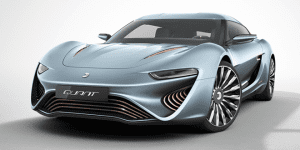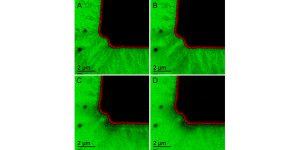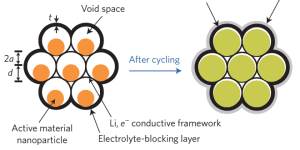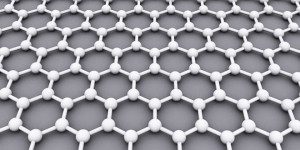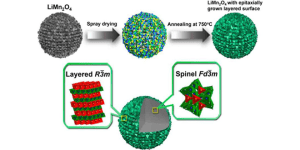Lithium-ion batteries typically include three components: active materials, conductive additives, and binders. A team of researchers at the University of Delaware recently discovered a sticky conductive material that could eliminate the need for binders. “The problem with the current technology is that the binders impair the electrochemical performance of the battery because of their insulating… Read more »
Search Results Found For: "NANO ONE"
Sporty prototype demonstrates flow cell battery technology
Among the many electrified vehicles on display at this week’s Geneva Auto Salon was one that demonstrates a new and possibly revolutionary energy storage system. Leichtenstein-based nanoFLOWCELL’s QUANT e-Sportlimousine, a sleek sports model with gull-wing doors, uses flow cell battery technology. Scientists at GE Global Research and Lawrence Berkeley National Laboratory announced that they were… Read more »
New microscopy system delivers real-time view of battery electrochemistry
You may not think about what’s going on inside the battery when you charge your EV, but the fate of the world may hang on the diminutive dramas taking place in there between the electrodes. Researchers at the Oak Ridge National Laboratory have used a new microscopy technique to get perhaps the best glimpse yet… Read more »
Pomegranate-style anode could lead to next generation of batteries
The big buzz on the EV tech scene these days is about silicon anodes, which could offer ten times more storage capacity than carbon anodes. Scientists around the world are looking for ways to overcome the remaining obstacles to using silicon for a new generation of lithium-ion batteries. Researchers at Stanford University and the DOE’s… Read more »
Former Envia Systems execs drop their lawsuit
Things are looking a little brighter for battery startup Envia Systems, as three of the company’s former executives dropped a lawsuit with little explanation. The suit, which was filed last November, alleged that co-founder and CTO Sujeet Kumar created the company using intellectual property that he stole from his previous employer, a nanotech startup called… Read more »
Samsung invests in graphene manufacturer XG Sciences
Samsung Ventures Investment Corporation has invested an undisclosed amount in graphene manufacturer XG Sciences, which the company will use to fund additional R&D. Lansing, Michigan-based XG Sciences manufactures energy storage materials based on the company’s xGnP graphene nanoplatelets and XG Leaf graphene sheet products. Last April, the company launched graphene-stabilized silicon anode materials for Li-ion… Read more »
Former Secretary of Energy Steven Chu joins board of Amprius
Dr. Steven Chu, a Nobel Prize winner in Physics and the former US Secretary of Energy, has joined the Board of Directors of Amprius, a developer of lithium-ion batteries with operations in California and China. Amprius, co-founded by Stanford Professor Yi Cui, introduced its first generation of batteries in May 2013, and it is now… Read more »
LG Chem secures international patents for its safety-reinforced battery separator
LG Chem, the world’s largest lithium-ion battery maker, has obtained a patent for its safety-reinforced separator (SRS) in Europe and Japan. The company already has patents for the technology in South Korea, the US and China. The separator is an important component of lithium-ion polymer batteries, separating the negative and positive poles to prevent internal… Read more »
South Korean team develops coated LMO cathode that lasts longer at high temperatures
The quest for the better battery involves ongoing research on improving and optimizing materials used for lithium-ion cells. One such material is LiMn2O4 (LMO), which offers high power and low cost, but cell life at high temperatures can be problematic. In a paper in Nano Letters, a team from the Ulsan National Institute of Science… Read more »
New microscopy technique gives researchers a better look inside batteries
Electricity may seem invisible, but storing it in batteries has some very physical effects. As a battery is charged and discharged, electrons and ions rush around from place to place, sometimes causing electrodes to change their shapes over time. As researchers experiment with improved electrode materials, it’s critical to get a microscopic view of what… Read more »





